
6 Incredible Sea Animals
Step into the sea and you’re soon in a fantastical world, where see-through jellyfish float by like ghosts, fish watch you without blinking, and huge creatures swim serenely through the deep. Scientists think there has been life in the oceans for 3.5 billion years, and it still thrives there today, scuttling along the bottom or swimming at the sunlit surface, in the chilly darkness of the midnight zone, or down in the lightless abyss. Scientists have discovered more than 226,000 sea animal species, and there are many still unknown. Read on to discover six incredible sea animals, from the familiar to the brilliantly strange.
Sea Turtle
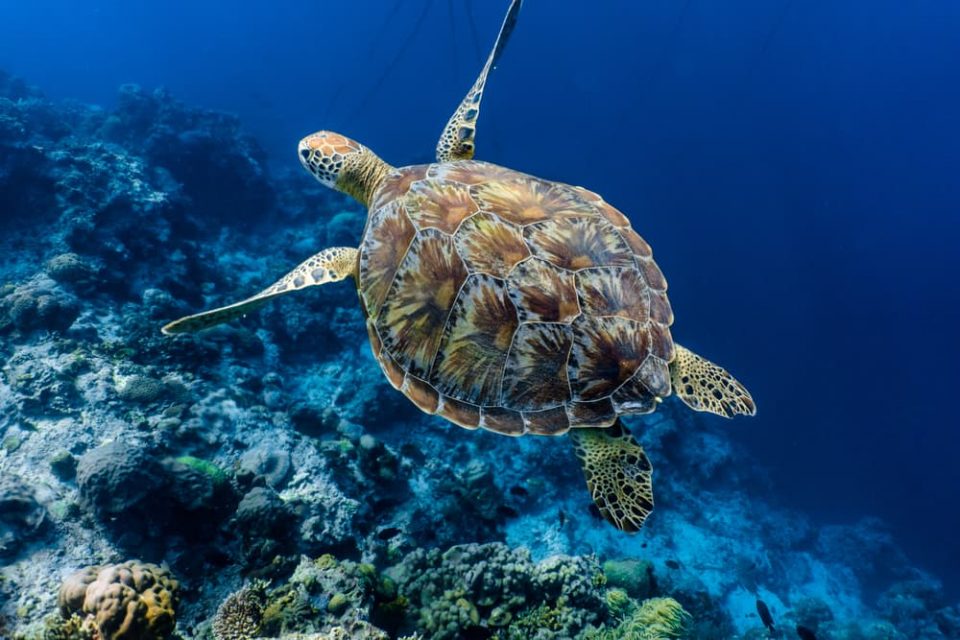
For many people, sea turtles are a source of inspiration and joy. Gliding elegantly through the ocean but returning dutifully to land to dig nests, they’ve appealed to seafaring cultures since the dawn of humanity. Earth’s oceans are home to seven species of sea turtles, each of which has a different appearance and habits. Found in every ocean except the Arctic and Antarctic, they spend most of the time in the water and only come on land to lay their eggs on beaches.
Sea turtles have been around for over 100 million years, long enough that they once shared the world with dinosaurs! Instead of the front legs and webbed back feet of land turtles, sea turtles have flippers that enable them to easily navigate the water, making some species accomplished world travelers. Leatherback turtles have been known to migrate 10,000 miles in a year, almost halfway around the world! Sea turtles can also dive up to thousands of feet and sleep underwater by absorbing oxygen through their cloaca.
Sea Otter
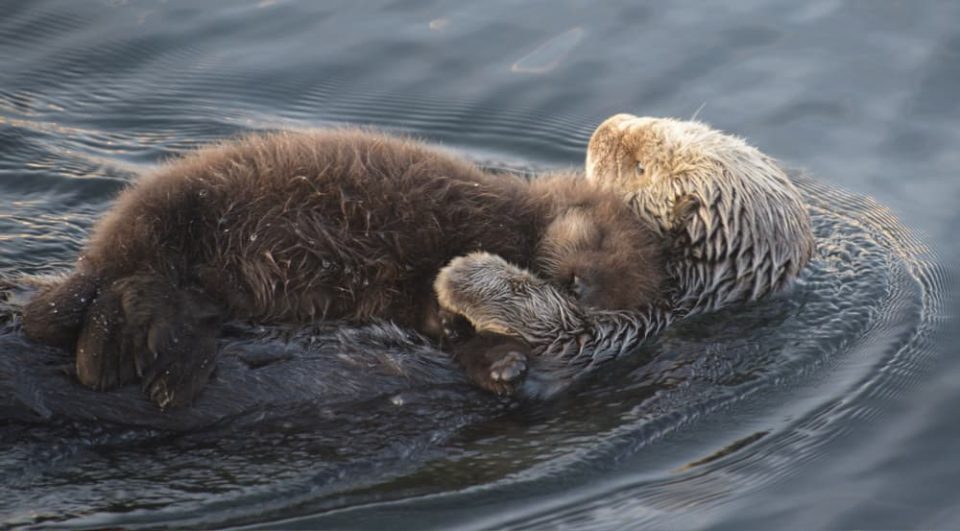
Sea otters, known for their impish playfulness, adorable pups, and use of rocks to break open their food, live in the Pacific Ocean. Three subspecies of them live along the ocean’s coasts, from California to Russia and Japan. They have long, sleek bodies and very thick hair—around 40 times more on one square inch of their bodies than most humans have on their whole head! All that hair helps insulate them from cold water.
When feeding, sea otters dive to the ocean floor to find urchins and other shellfish. Then they pull them to the surface and float on their backs to eat them. Because they eat urchins, which can destroy all other sea life in their habitats, sea otters are essential guardians of the ecosystems they live in.
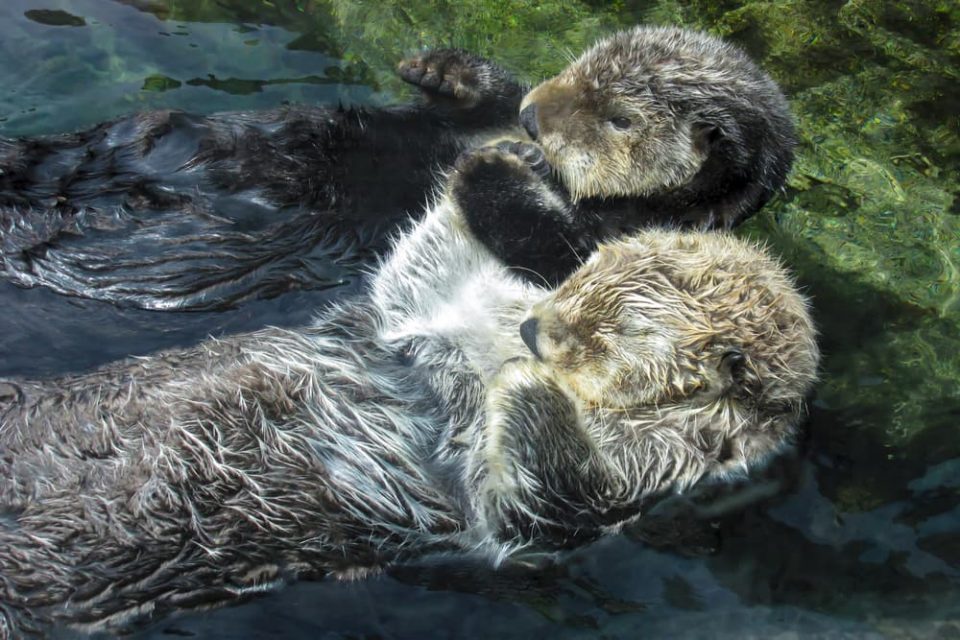
Sea otters do occasionally rest on land, but they prefer the ocean so much that they usually sleep there. Groups of sea otters sleep together on their backs, holding on to one another so they don’t float away. These groups can get big—up to 1,000 otters at once!
Orca
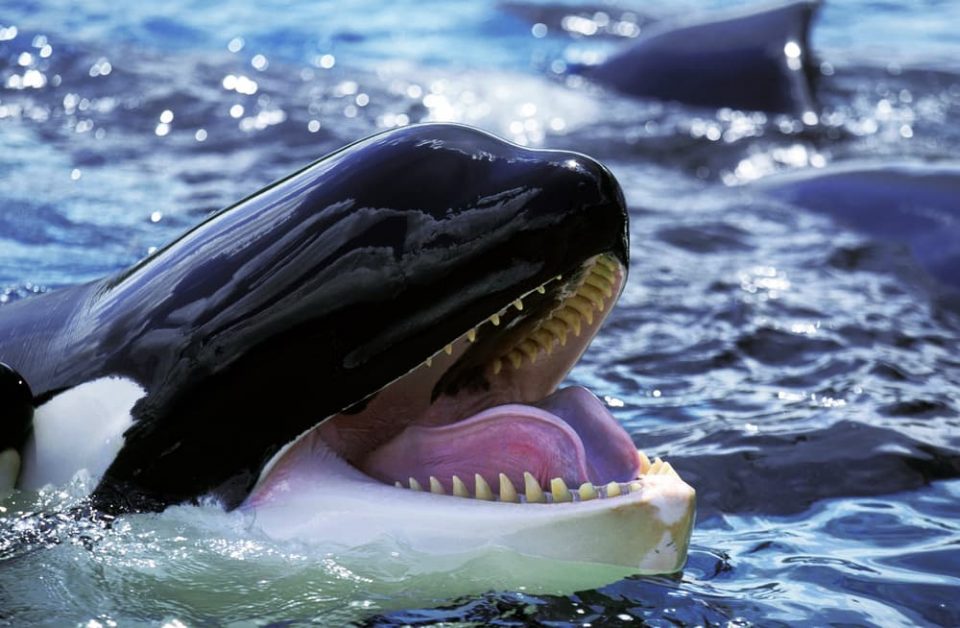
Orcas, despite being known as killer whales, are actually dolphins! There are three types of them: resident, transient, and offshore. Resident orcas live near the shore and eat fish. Transient orcas stay on the move and eat larger prey. And offshore orcas live in the open ocean and eat creatures found there.
All three types of orcas live and hunt in family groups called pods, working together to catch prey ranging from fish and sharks to whales. Orcas are so social that each pod develops its own language of clicks, whistles, and calls over time.
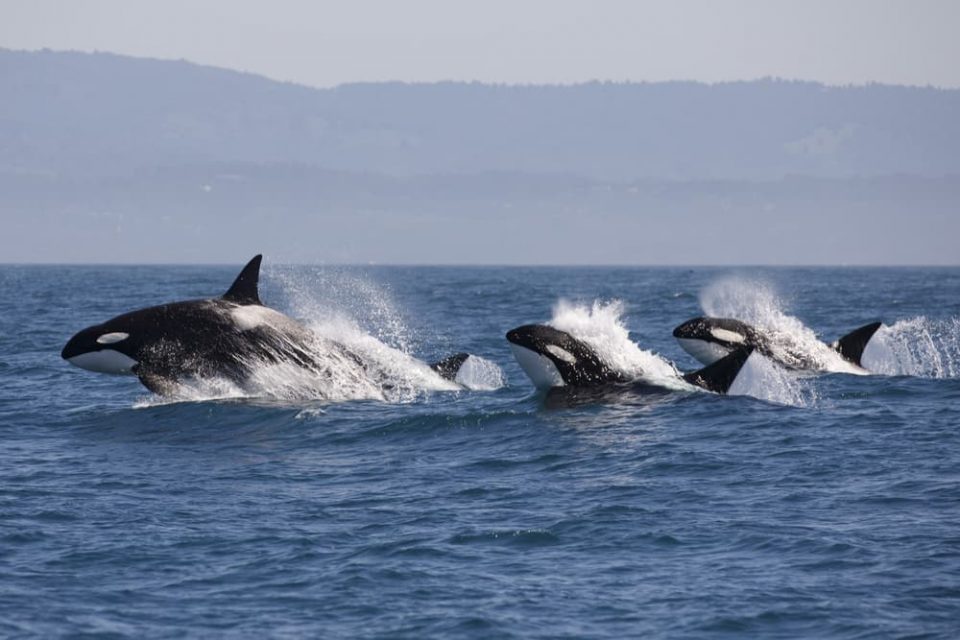
Pods also develop unique hunting techniques. Some groups of orcas in the Pacific surge onto the beach to surprise the seals they eat. Others team up to hunt dangerous predators like the great white shark and seven-gilled shark. These hunting methods, passed from generation to generation alongside language, form a sort of culture that distinguishes each orca pod.
Blue Whale
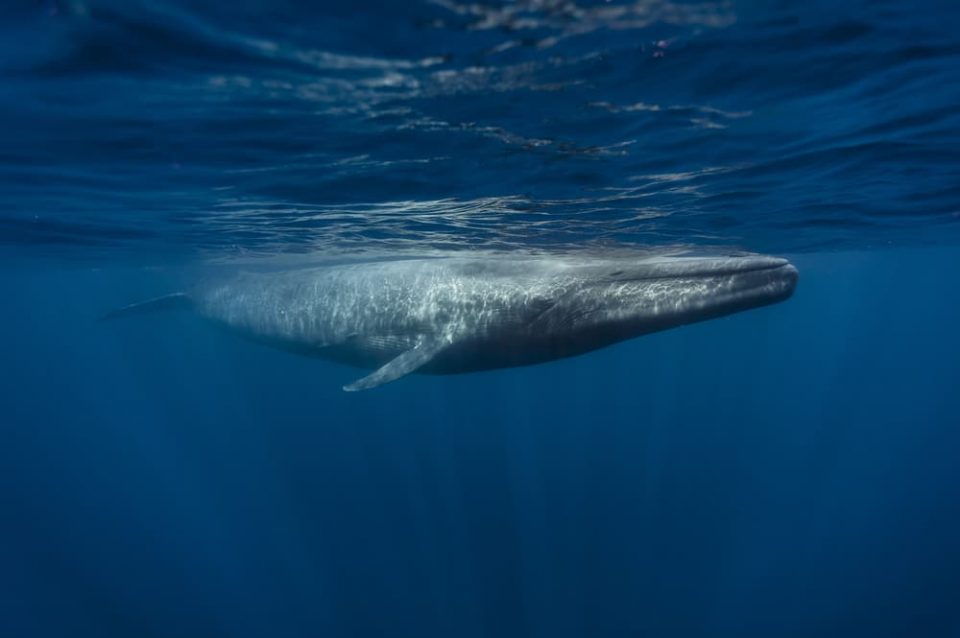
Blue whales are the biggest creatures in the sea by far. They can grow up to almost 100 feet long and weigh close to 200 tons. That’s as long as three school buses and as heavy as a house! Their hearts are as big as cars, some of their blood vessels are so wide a kid could crawl through them, and even their newborn calves are bigger than a pickup truck. Blue whales aren’t just the largest animals alive today, they’re the largest animals that have ever lived. They’re even bigger than the dinosaurs were!
Blue whales live in every ocean but the Arctic, and there are five subspecies of them, some bigger than others. Creatures of the open ocean, they’re rarely seen near shores and there aren’t very many of them, which makes them difficult for scientists to study. Because they’re so large, they don’t have many natural predators—they can usually escape even a pod of orcas!
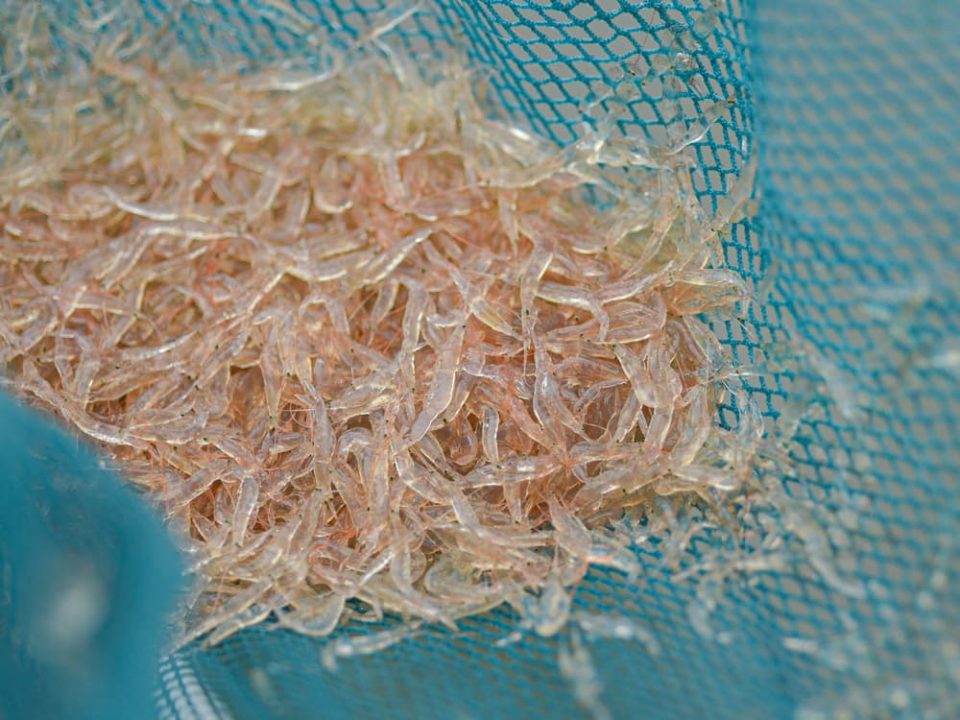
Blue whales survive by eating some of the ocean’s smallest animals: tiny shrimp called krill. To feed, blue whales open their huge mouths and take in up to 100 tons of krill and water mixed together. They then close their mouths and force the water out through big plates in their mouths called baleen. The krill are left behind for the whale to swallow. An adult blue whale eats as much as 7,900 pounds of krill every day.
Whale Shark
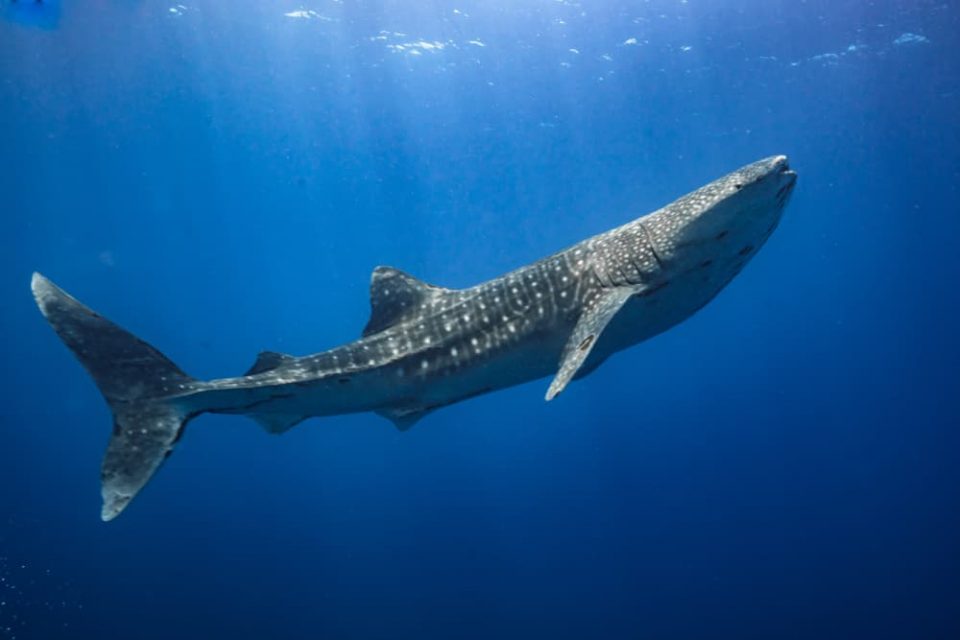
Whale sharks are unusual creatures. While blue whales are the oceans’ largest animal, whale sharks are their largest fish. They have gills to breathe through, and their fins look like a shark’s. But they’re much bigger than other sharks, and they eat like the biggest whales do—by opening their mouths wide and taking in lots of water!
Inside their mouths, special tissue in their gills traps prey like krill, plankton, and small fish. Then they push the water out and close their mouths to swallow. Although whale sharks have hundreds of rows of teeth, they don’t chew their food. This means that like blue whales, scientists classify them as filter feeders.
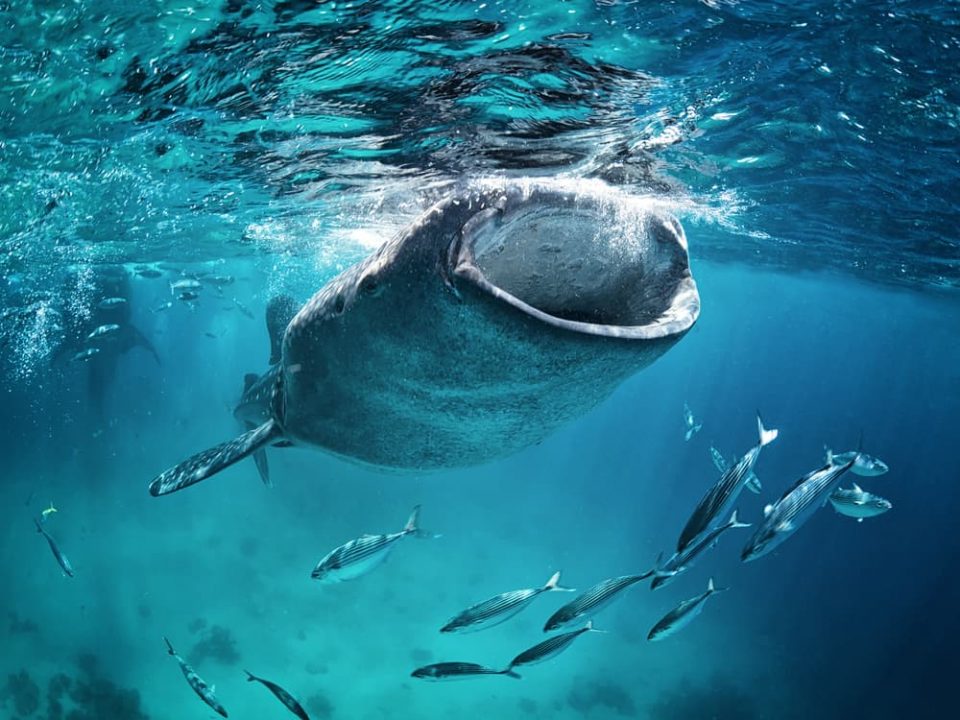
Whale sharks live in warm waters all over the world, and they live for a long time! Their lifespan is similar to a human’s, with the oldest living to be over 100. They also have a pattern of white spots unique to each individual. Scientists use these patterns to tell them apart, sometimes with computer programs designed to identify patterns in the stars.
Sunfish
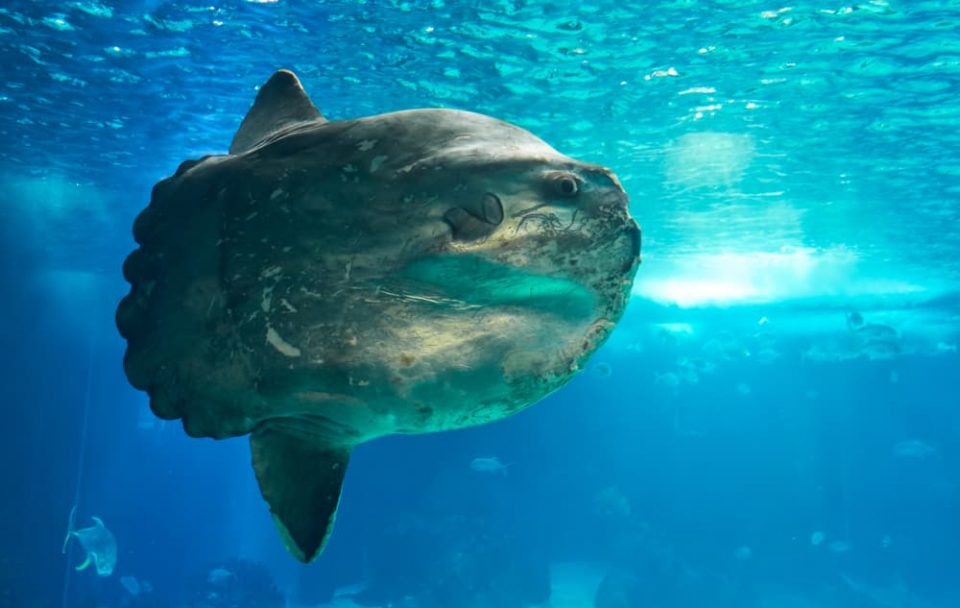
Also known as the mola, the ocean sunfish is very different from the freshwater fish that share its name. For starters, the ocean sunfish is big—up to 11 feet long and 5,000 pounds—and flat. Its scientific name (mola mola) comes from the Latin word for “millstone,” which a Swedish scientist compared it to.
Unlike both the blue whale and whale shark, which emerge live from their mothers, the ocean sunfish starts its life as a tiny egg. For a while it’s protected by a spiky, starlike covering that makes it look a little like the puffer fish it evolved from. Those spikes disappear as it grows, however. At full size, ocean sunfish have fused teeth perfect for eating jellyfish (their favorite snack), and two huge fins they use to swim instead of relying on a tail.
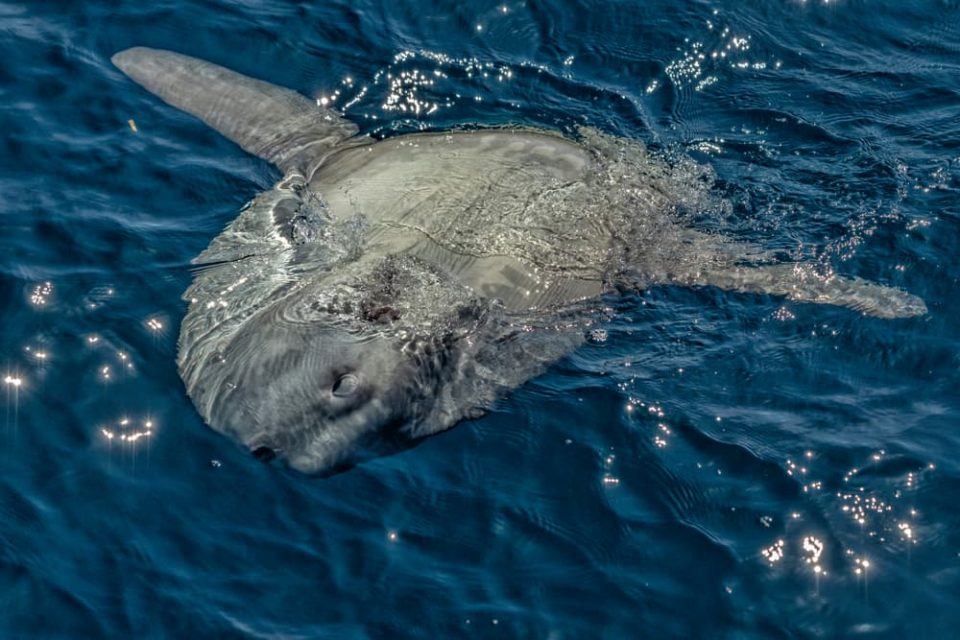
Curious how sunfish got their name? They attract a lot of tiny creatures called parasites that live on their skin. To deal with that, they float up to the ocean surface and “sun” themselves, lying flat and letting ocean birds pluck things off their slimy bodies. Yuck!
Learn More
Hungry for fun activities to help kids learn more about the animals of the sea? Check out our kelp forest fingerprint critters, or take a deep dive into the Pacific with our Animals Wild subscription.
